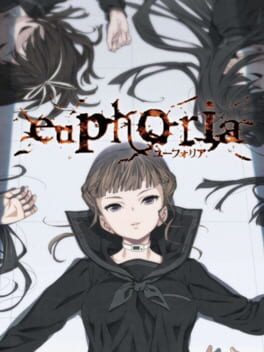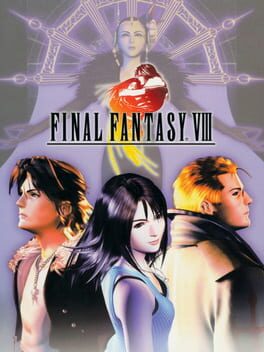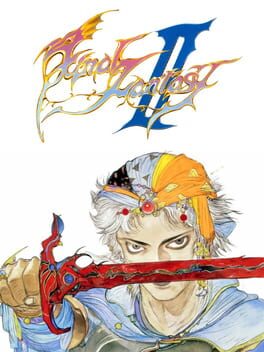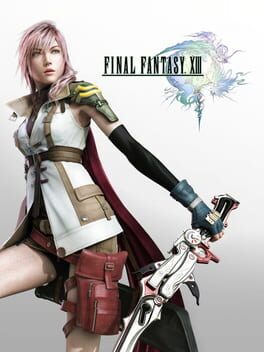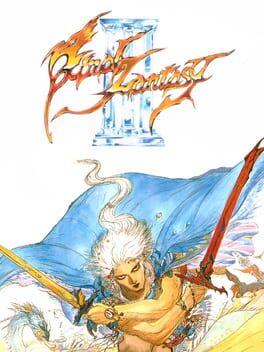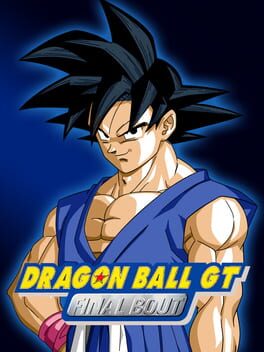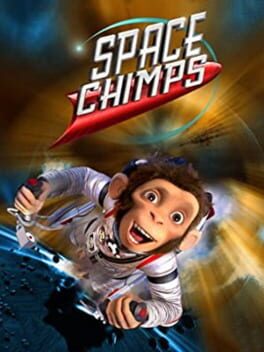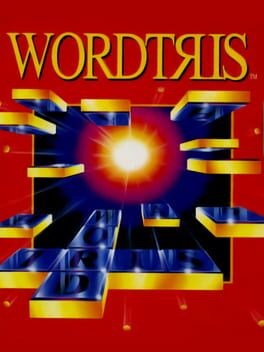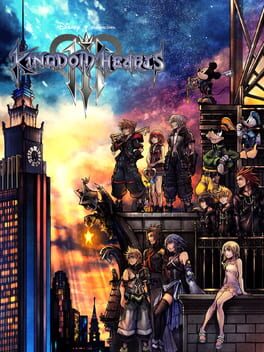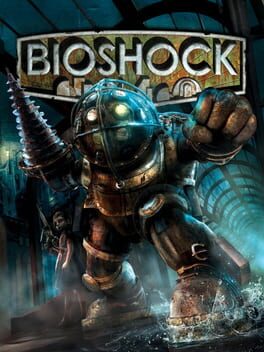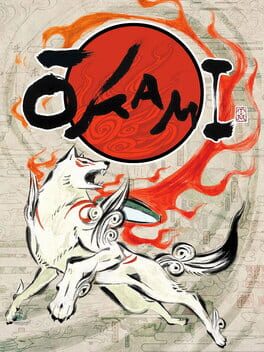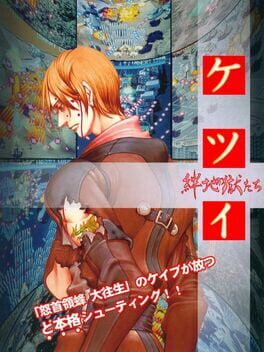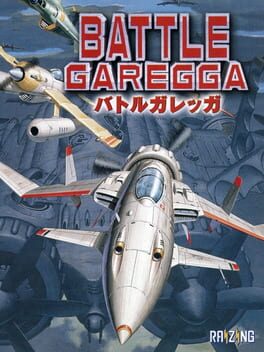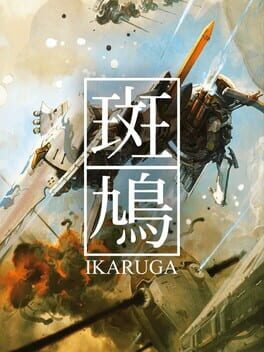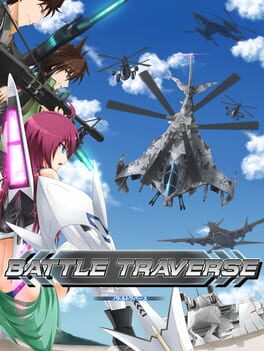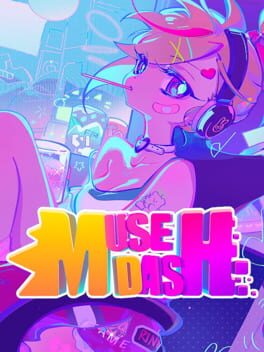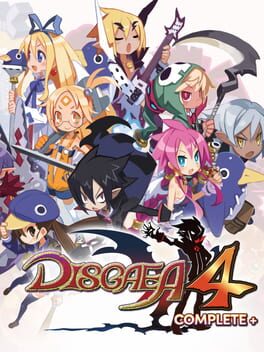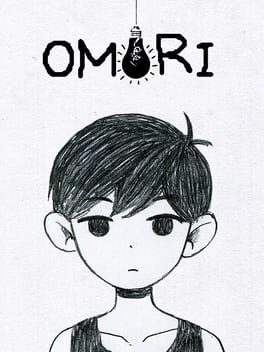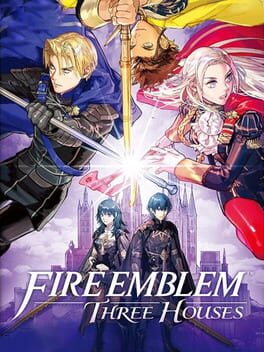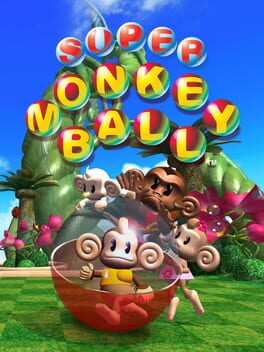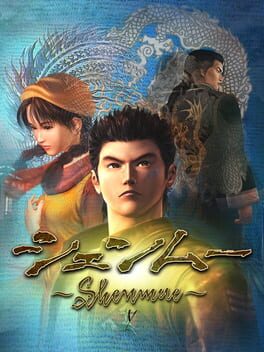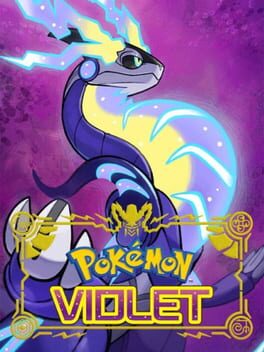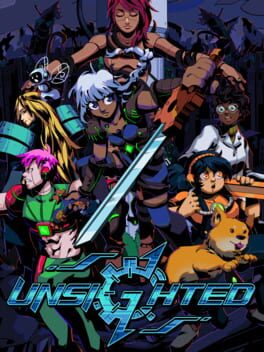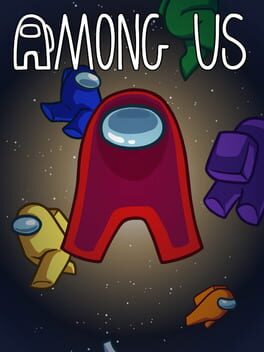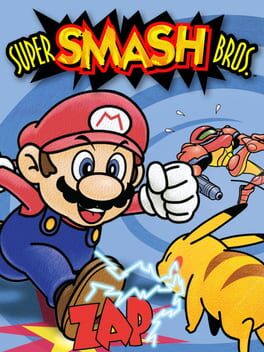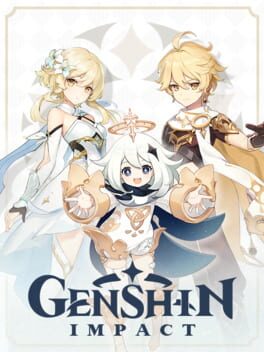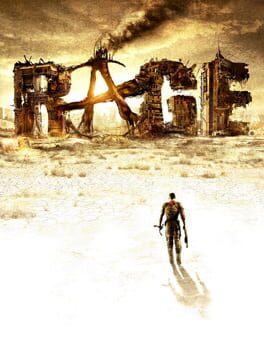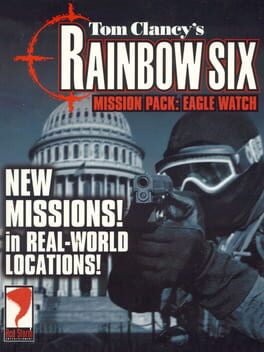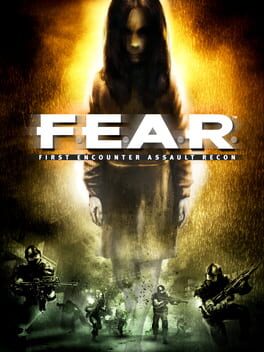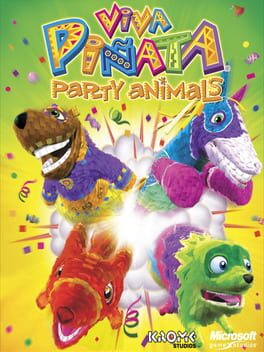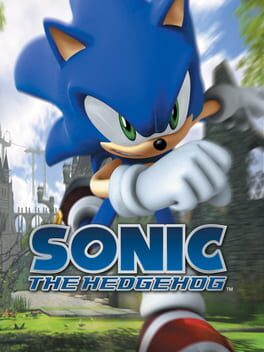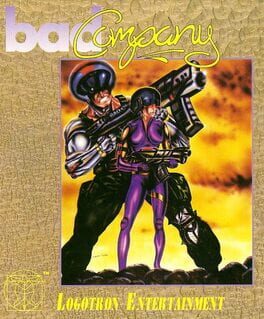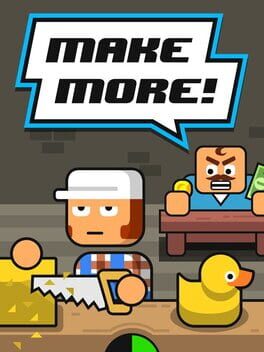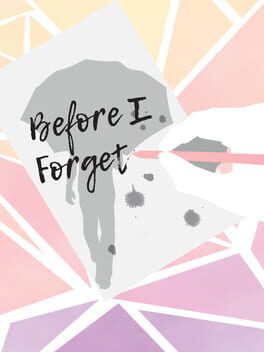LidlMan0679
84 reviews liked by LidlMan0679
"When a man is just born, he is weak and flexible. When he dies, he is hard and insensitive. When a tree is growing, it’s tender and pliant. But when it’s dry and hard, it dies. Hardness and strength are death’s companions. Pliancy and weakness are expressions of the freshness of being. Because what has hardened will never win." - Stalker
CHAPTER 1
In the late summer of that year I played a game in a house that looked across the road and the river to the nuclear base. In the bed of the river there were pebbles and boulders, dry and grey by the cloud, and the water was gone, swiftly moving and away from the channels. Stalkers went by the house and down the road and the dust they raised powdered the branches of the dead trees. The trunks of the trees were rotting and the leaves fell early that year and I saw the stalkers marching along the road and the dust rising and leaving, stirred by the fallout's falling and the stalkers marching, and afterward the road bare and grey except for the bodies.
The Zone was poor for crops; there were few loaves of bread, and beyond the Zone the hills were brown and bare. There was fighting in the hills at night. I could see the flashes from the guns. In the dark it was like summer lightning - the nights were hot and there was the feeling of a storm coming.
Sometimes in the dark of the house, I heard the troops marching under the broken window and cars going past. There was much traffic at night, and many stalkers on the roads with boxes of ammunition, and helicopters carried men, and tanks with guns were rusted by rain.
To the northwest I could look across a valley and see a dead forest of trees, and behind it a laboratory on this side of the river. There was fighting for that lab too, but it was not successful, and in the night when the mutants came, the leaves all fell from the trees and the branches were bare and the trunks black with rain. The animals were thin and bare-branched too, and all the country wet and brown and dead with the apocalypse. There were mists over the river and clouds on the mountain and the stalkers splashed blood on the roads and they were muddy and wet in their suits; their rifles were wet and under their suits the ammunition bulged forward under the suits so that the stalkers, passing on the road, walked as though they were six months encumbered with child.
Usually there was a player in the seat with the stalker, and a small black cat often passed him going very fast. The cat made more noise than the mutants even, and when he attacked, things went very badly.
At the end of the game came the permanent rain, and with the rain came the end.
But the game was saved, and in the end only I died of it.
[Load last save]
CHAPTER 1
In the late summer of that year I played a game in a house that looked across the road and the river to the nuclear base. In the bed of the river there were pebbles and boulders, dry and grey by the cloud, and the water was gone, swiftly moving and away from the channels. Stalkers went by the house and down the road and the dust they raised powdered the branches of the dead trees. The trunks of the trees were rotting and the leaves fell early that year and I saw the stalkers marching along the road and the dust rising and leaving, stirred by the fallout's falling and the stalkers marching, and afterward the road bare and grey except for the bodies.
The Zone was poor for crops; there were few loaves of bread, and beyond the Zone the hills were brown and bare. There was fighting in the hills at night. I could see the flashes from the guns. In the dark it was like summer lightning - the nights were hot and there was the feeling of a storm coming.
Sometimes in the dark of the house, I heard the troops marching under the broken window and cars going past. There was much traffic at night, and many stalkers on the roads with boxes of ammunition, and helicopters carried men, and tanks with guns were rusted by rain.
To the northwest I could look across a valley and see a dead forest of trees, and behind it a laboratory on this side of the river. There was fighting for that lab too, but it was not successful, and in the night when the mutants came, the leaves all fell from the trees and the branches were bare and the trunks black with rain. The animals were thin and bare-branched too, and all the country wet and brown and dead with the apocalypse. There were mists over the river and clouds on the mountain and the stalkers splashed blood on the roads and they were muddy and wet in their suits; their rifles were wet and under their suits the ammunition bulged forward under the suits so that the stalkers, passing on the road, walked as though they were six months encumbered with child.
Usually there was a player in the seat with the stalker, and a small black cat often passed him going very fast. The cat made more noise than the mutants even, and when he attacked, things went very badly.
At the end of the game came the permanent rain, and with the rain came the end.
But the game was saved, and in the end only I died of it.
[Load last save]
Final Fantasy VI
1994
I find that the two most iconic Square titles on the Super Nintendo are rather emblematic of two eras and representative schools of thought regarding the Japanese role-playing game. Chrono Trigger, to me, marks the end of the early years - a refined, fine-tuned, high-caliber personification of all that the old guard of the medium had to give. It’s a title that knows its scale, paces itself remarkably, and stays within its confines to offer what is likely one of the most perfectly-constructed gameplay experiences the genre has seen to this very day. But it’s not the one of the pair that speaks to me. That would be Final Fantasy VI. On almost every technical level, it’s an inferior title to Chrono Trigger. The cast is double the size and yet a third of them are more or less invaluable in comparison to the party mainstays in both battle and narrative relevance. Inventory navigation and maintenance is rip-your-hair-out levels of obnoxious by the time you’re juggling equipment for upwards of a dozen party members. Arguably, the cohesion of the inter-party dynamic struggles to hold in the game’s back half. But none of this could stop Final Fantasy VI from being the ambitious, game-changing work that it is. Chrono Trigger is the Super Nintendo RPG perfected - but Final Fantasy VI is the PlayStation RPG on the horizon.
This is a game I have a storied history with, actually. It was my second game in the Final Fantasy series, having played it right after the Game Boy Advance remake of the first game. In my pre-adolescence, I had seen and heard so much about it from people all over the Internet claiming it to be the best RPG ever made - and I took the lead. Sure enough, there was a long period of time where it was my #2 Game Ever, right next to EarthBound. I used to play this game two times a year minimum. It’s safe to say I know the first half of this game like the back of my hand. But, as anyone with an interest in the artistic side of this medium does, I kept growing and experiencing new titles over time. The days of MOTHER and Final Fantasy led me to Megami Tensei, to early Fire Emblem, so on and so forth. I suppose I had a bit of a contrarian streak with good ol’ Final Fantasy VI, even going as far to join the “overrated” side of discussion and banishing it from my top five of the series overall. It’s a game I grew up with, but this time around, that includes the growing pains of teenage contrarianism that I look back on with understanding… but a little flushed-cheeks embarrassment.
So, where do I stand with this old friend upon a contemporary revisit? The cycle is complete, really. Is it my favorite game in the series? Well, not quite, but I will say that my favorites - VII and VIII, if you’re wondering - owe a tremendous amount to the shift away from the series’ roots that Final Fantasy VI before them dared to take. So much of the core cast of Square that I care the most about worked on this project; Uematsu is in his absolute prime by this point, Nomura is about to take this entire company and punt it into the modern age, and my beloved Takahashi and Saga are both in attendance here while Xenogears is still but a twinkle in their eyes. The ambition is there. The talent is there. The vision is there. And the execution is, splinters and all, frankly still fucking incredible. The entire “Balance is Restored” sequence alone validates all the praise and adoration this game has seen for the thirty years we’ve had it in our hands. All love and respect to Trigger, but this is Square’s crème de la crème offering of the 16-bit era. A very reasonable selection for the so-called greatest game of all time upon the year of its release.
This is a game I have a storied history with, actually. It was my second game in the Final Fantasy series, having played it right after the Game Boy Advance remake of the first game. In my pre-adolescence, I had seen and heard so much about it from people all over the Internet claiming it to be the best RPG ever made - and I took the lead. Sure enough, there was a long period of time where it was my #2 Game Ever, right next to EarthBound. I used to play this game two times a year minimum. It’s safe to say I know the first half of this game like the back of my hand. But, as anyone with an interest in the artistic side of this medium does, I kept growing and experiencing new titles over time. The days of MOTHER and Final Fantasy led me to Megami Tensei, to early Fire Emblem, so on and so forth. I suppose I had a bit of a contrarian streak with good ol’ Final Fantasy VI, even going as far to join the “overrated” side of discussion and banishing it from my top five of the series overall. It’s a game I grew up with, but this time around, that includes the growing pains of teenage contrarianism that I look back on with understanding… but a little flushed-cheeks embarrassment.
So, where do I stand with this old friend upon a contemporary revisit? The cycle is complete, really. Is it my favorite game in the series? Well, not quite, but I will say that my favorites - VII and VIII, if you’re wondering - owe a tremendous amount to the shift away from the series’ roots that Final Fantasy VI before them dared to take. So much of the core cast of Square that I care the most about worked on this project; Uematsu is in his absolute prime by this point, Nomura is about to take this entire company and punt it into the modern age, and my beloved Takahashi and Saga are both in attendance here while Xenogears is still but a twinkle in their eyes. The ambition is there. The talent is there. The vision is there. And the execution is, splinters and all, frankly still fucking incredible. The entire “Balance is Restored” sequence alone validates all the praise and adoration this game has seen for the thirty years we’ve had it in our hands. All love and respect to Trigger, but this is Square’s crème de la crème offering of the 16-bit era. A very reasonable selection for the so-called greatest game of all time upon the year of its release.
Elden Ring
2022
Remember how Breath of the Wild didn't just put Twilight Princess Link in an open world? Well...
Elden Ring's open world does not complement its still-unchaged-since-Demon's Souls mechanics -- if you thought it was too easy to run past janky AI fodder in Dark Souls 2, wait until you see the exact same shit in a gigantic flat wasteland that will only become more cumbersome to play through with every fresh save file.
It's peak when FromSoft are in their bag though, Leyndell is the type of shit where you can't help but be in disbelief that it was somehow created by humans. The power fantasy provided by my shameless quadruple Katana build did wear thin by the end, but the Souls take on action-RPG mechanics has always stood out to me for its actually fucking bearable blend of intuitive while still open-ended progression with a consistent sense of real discovery rather than the interchangeable loot/skill tree hell of so many other games. Big Dragon Quest energy on this one.
Elden Ring's open world does not complement its still-unchaged-since-Demon's Souls mechanics -- if you thought it was too easy to run past janky AI fodder in Dark Souls 2, wait until you see the exact same shit in a gigantic flat wasteland that will only become more cumbersome to play through with every fresh save file.
It's peak when FromSoft are in their bag though, Leyndell is the type of shit where you can't help but be in disbelief that it was somehow created by humans. The power fantasy provided by my shameless quadruple Katana build did wear thin by the end, but the Souls take on action-RPG mechanics has always stood out to me for its actually fucking bearable blend of intuitive while still open-ended progression with a consistent sense of real discovery rather than the interchangeable loot/skill tree hell of so many other games. Big Dragon Quest energy on this one.
Kururin Paradise
2002
the fundamental genius of the kururin trilogy derives from its unique, bare-bones approach to the technique of constantly altering outcomes over time. consider a racing game: part of the appeal of the genre is how the timing of every action will alter the outcome of each action that comes after it. taking a turn not only changes your speed and direction in the moment, but it will also affect the speed at which you arrive at the next turn, which will affect the requisite braking power needed for said turn, the best line to take through the curve, and potentially the performance of your vehicle assuming that you're playing with something where the powerband or another handling element of the vehicle matters. varying when and/or how you take the turn adds nuance to the way you must approach each section afterwards. it is easy to call a racing game a "puzzle" of sorts because one could effectively "solve" the right actions to do at each point in the track, but with an incredibly dense state space that inhibits reproducibility (aka requiring precision to recreate particular states that most players won't be able to perform consistently) and a model that alters behavior based on previous actions, the game can let the player get the gist on how to handle a turn while forcing them to continue paying constant attention to their car's state and reacting to handling nuances that they may not have explicitly encountered before.
the kururin series does this without the dense state space by instead keeping the character's long, stick-like ship constantly turning while punishing contact with any obstacles. the player tracks very little but the rotation of the ship and the location of various moving obstacles, yet small variations in timing will change the phase of the ship's rotation for future movement and thus force a reevaluation on how to move through future corridors. in some ways the unforgiving, ticky-tacky movement (the player has three discrete speeds to choose from) actually enhances this effect by in its own way inhibiting reproducibility; racing games require subtle input shifts to provide handling differences, but the comparative obviousness (and slow rotation speed) of kururin's gimmick more or less necessitates large, unsubtle movement inputs to actually yield new effects down the line.
however, because of the cyclical nature of the helirin's (the ship's) rotation, desired states will always reoccur provided the player has space to sit and wait, giving a start-and-stop effect to play that can become underwhelming. this kills the above effect as well, as the ability to frequently reset your state ignores the gradual changes in outcome that makes the above playstyle so compelling. the first game suffered immensely from this issue in its larger stages thanks to obstacles with their own cycles requiring a synchronization between the helirin and the obstacle that could potentially take multiple rotations to occur based on the difference in period between the two. it attempted to solve this by allowing you to change your rotation phase via springs that bounce you in the other direction, which were often stacked in such a way you could create a holding pattern for the helirin until achieving a desired phase and proceeding through the obstacle. still, this is just a spin on waiting in place. paradise smartly fixes this by finally giving the player control over their rotation speed. even with only a single speed increase to work with, the player has significantly more leverage on how to deal with moving obstacles, and the designers can in turn decrease the amount of reset points from levels, resulting in a more compact and intense scenario feel overall.
indeed, as the first game devolved into gauntlets of obstacles that rewarded consistency over analysis of the interactions that arise from the rotation, paradise goes in the other direction. the clock level... oh my god, what a mind-fuck moment when I first played this game years and years ago. a clock-face maze with two giant rotating arms (one clockwise, one counter-clockwise) forms the majority of this level, bookended by two small obstacle generator sections. the clock face is deceptively open, but one quickly finds that the incursion of the arms prevents one from staying in place, and the design of the different corridors within the clock face make it necessary to switch between clockwise and counter-clockwise in order to move through it, especially if one wishes to get the key rising on the top side of the structure. later levels experiment with other gimmicks, such as ghosts that jump onto the ship and slow it down, forcing the player to move into higher speeds through tight areas and then instantly switch out as soon as the ghosts leave, and sliding walls that change the layout of the level as it progresses, disorienting the player as they progress to the exit. other levels also retain the open routing of the clock level far more than the game's on-rails predecessor, often by creating seemingly random wall structures that offer multiple different routes with escalating difficulty depending on where one finds little crevices to sneak through between surfaces. this is iterated upon with extra areas unlocked with keys on a surprising amount of levels, often with the keys themselves residing in out-of-the-way sections of other levels. all in all, it's quite the leap over the original kururin in confidence of design, even as the true final level begins to recede into the same tiring gauntlets as the original.
what will be somewhat more polarizing to a new player are the minigames. the titular hero must rescue his family members from a circus troupe (I think?), each of whom provides a minigame as prerequisite for freeing one of the prisoners. in the best cases, this involves a twist upon the core mechanics of the game, such as changing the length of the helirin over time or having it carry items that jut out from its arms. a particular lawnmower game provides a rather interesting test in how to actually cover area with the helirin as opposed just to avoiding contact. others are perfunctory (the flappy bird minigame early on) or downright unpleasant (the strict and unwieldy racing game). a particular minigame requires you to rotate the screen on its side to get a vertical view of the helirin tumbling down a rock shaft collecting some items or whatever. begs the question of why we don't have a screen rotation mode in mgba yet? perhaps there's not enough other gba games that use this gimmick; I imagine that the advent of the clamshell GBA SP basically nixed that idea for any future titles.
the kururin series does this without the dense state space by instead keeping the character's long, stick-like ship constantly turning while punishing contact with any obstacles. the player tracks very little but the rotation of the ship and the location of various moving obstacles, yet small variations in timing will change the phase of the ship's rotation for future movement and thus force a reevaluation on how to move through future corridors. in some ways the unforgiving, ticky-tacky movement (the player has three discrete speeds to choose from) actually enhances this effect by in its own way inhibiting reproducibility; racing games require subtle input shifts to provide handling differences, but the comparative obviousness (and slow rotation speed) of kururin's gimmick more or less necessitates large, unsubtle movement inputs to actually yield new effects down the line.
however, because of the cyclical nature of the helirin's (the ship's) rotation, desired states will always reoccur provided the player has space to sit and wait, giving a start-and-stop effect to play that can become underwhelming. this kills the above effect as well, as the ability to frequently reset your state ignores the gradual changes in outcome that makes the above playstyle so compelling. the first game suffered immensely from this issue in its larger stages thanks to obstacles with their own cycles requiring a synchronization between the helirin and the obstacle that could potentially take multiple rotations to occur based on the difference in period between the two. it attempted to solve this by allowing you to change your rotation phase via springs that bounce you in the other direction, which were often stacked in such a way you could create a holding pattern for the helirin until achieving a desired phase and proceeding through the obstacle. still, this is just a spin on waiting in place. paradise smartly fixes this by finally giving the player control over their rotation speed. even with only a single speed increase to work with, the player has significantly more leverage on how to deal with moving obstacles, and the designers can in turn decrease the amount of reset points from levels, resulting in a more compact and intense scenario feel overall.
indeed, as the first game devolved into gauntlets of obstacles that rewarded consistency over analysis of the interactions that arise from the rotation, paradise goes in the other direction. the clock level... oh my god, what a mind-fuck moment when I first played this game years and years ago. a clock-face maze with two giant rotating arms (one clockwise, one counter-clockwise) forms the majority of this level, bookended by two small obstacle generator sections. the clock face is deceptively open, but one quickly finds that the incursion of the arms prevents one from staying in place, and the design of the different corridors within the clock face make it necessary to switch between clockwise and counter-clockwise in order to move through it, especially if one wishes to get the key rising on the top side of the structure. later levels experiment with other gimmicks, such as ghosts that jump onto the ship and slow it down, forcing the player to move into higher speeds through tight areas and then instantly switch out as soon as the ghosts leave, and sliding walls that change the layout of the level as it progresses, disorienting the player as they progress to the exit. other levels also retain the open routing of the clock level far more than the game's on-rails predecessor, often by creating seemingly random wall structures that offer multiple different routes with escalating difficulty depending on where one finds little crevices to sneak through between surfaces. this is iterated upon with extra areas unlocked with keys on a surprising amount of levels, often with the keys themselves residing in out-of-the-way sections of other levels. all in all, it's quite the leap over the original kururin in confidence of design, even as the true final level begins to recede into the same tiring gauntlets as the original.
what will be somewhat more polarizing to a new player are the minigames. the titular hero must rescue his family members from a circus troupe (I think?), each of whom provides a minigame as prerequisite for freeing one of the prisoners. in the best cases, this involves a twist upon the core mechanics of the game, such as changing the length of the helirin over time or having it carry items that jut out from its arms. a particular lawnmower game provides a rather interesting test in how to actually cover area with the helirin as opposed just to avoiding contact. others are perfunctory (the flappy bird minigame early on) or downright unpleasant (the strict and unwieldy racing game). a particular minigame requires you to rotate the screen on its side to get a vertical view of the helirin tumbling down a rock shaft collecting some items or whatever. begs the question of why we don't have a screen rotation mode in mgba yet? perhaps there's not enough other gba games that use this gimmick; I imagine that the advent of the clamshell GBA SP basically nixed that idea for any future titles.
Mother 3
2006
Chapter One
A child ran off from their village, filled with rage. A petty kind of anger; one that the child would have all but forgotten about the next time you saw them. This next time would never come, though. The child disappeared and in their place stood a Destroyer.
Chapter Two
The village seemed different. Strange new people kept showing up, with pig shaped masks covering their eyes. On the surface, they went about their business and chatted like any other villager but the more mind you paid them, the more their words rang hollow. Their thoughts and jokes seemed inorganic; mass produced even. As these Pigmasks gathered in the village, the original people there felt alienated. An old man, once known for his insights and his sharp wit would get angrier and angrier, lashing out at those around him and eventually leaving. More villagers would follow suit, some of them against their will, as this community they saw as a safe haven to share things they couldn’t share anywhere else slowly but surely became part of that “anywhere else.”
Were these Pigmasks to blame for everything? Or was it merely a case of things that always infested the community finally bubbling up to the surface? And what of the Destroyer, a one-time villager, now hailed as the champion of the Pigmasks?
Chapter Three
A monkey walked through a forest with boxes on their back; head and torso fighting a fierce battle to not fall and hit the ground. This grueling process eventually became routine and the monkey’s body eventually went on autopilot. They had all this time to think about if they’ll ever move past this task and if they’ll ever have a purpose.
Did the Destroyer have the same thoughts in this same forest?
Chapter Four
Another village child was not unlike the one who would become the Destroyer. In fact, you could say that these two village children were a single entity; two sides of the same coin. The Destroyer was the head of this coin, facing up and always the topic of conversation from those who saw this “face.” The tail, stuck to the ground, reveled in the attention the head received. They took glee in seeing friends talk about the Destroyer without any clue of its relation to the one standing near them. They searched for other villagers’ words on this mysterious Destroyer and snuck into houses to see them: the praise, the insults, the natural discussions surrounding this new “symbol” of the village.
This was not healthy for the village child. But still, could you blame them? This sensation of feeling important, even if that importance was just a niche micro-celeb in a small village, was much more comforting than the cold reality of meaning nothing in the grand scheme of things.
Chapter Five
A Pigmask working in a tower was a big fan of a rock band. They were utterly awestruck at the sight of that band’s merchandise on the man that entered the tower earlier that day and could not talk about anything other than that band: expressing their love of the band’s work, idolizing the ones behind it as supposedly great people, and elevating the band to some moral paragon because of milquetoast political opinions in its songs.
The Destroyer was in the tower too, watching this Pigmask’s conversation with mere apathy if not active contempt.
Chapter Six
Sometimes, ghosts of the past appear as reminders of what will never come back.
Chapter Seven
The Destroyer pulled a needle out of the ground and felt nothing. They pulled quite a bit of these needles before but something was different this time. The act was now done only out of some perceived obligation; to the Pigmasks and villagers cheering on or to the fake images of hearts that result from the act. It was time for the last needle to be pulled.
Chapter Eight
The Destroyer laid on the ground motionless as its tail pulled the final needle on its behalf. Its supposed stardom was crushed into not even half a star.
It’s over.
A child ran off from their village, filled with rage. A petty kind of anger; one that the child would have all but forgotten about the next time you saw them. This next time would never come, though. The child disappeared and in their place stood a Destroyer.
Chapter Two
The village seemed different. Strange new people kept showing up, with pig shaped masks covering their eyes. On the surface, they went about their business and chatted like any other villager but the more mind you paid them, the more their words rang hollow. Their thoughts and jokes seemed inorganic; mass produced even. As these Pigmasks gathered in the village, the original people there felt alienated. An old man, once known for his insights and his sharp wit would get angrier and angrier, lashing out at those around him and eventually leaving. More villagers would follow suit, some of them against their will, as this community they saw as a safe haven to share things they couldn’t share anywhere else slowly but surely became part of that “anywhere else.”
Were these Pigmasks to blame for everything? Or was it merely a case of things that always infested the community finally bubbling up to the surface? And what of the Destroyer, a one-time villager, now hailed as the champion of the Pigmasks?
Chapter Three
A monkey walked through a forest with boxes on their back; head and torso fighting a fierce battle to not fall and hit the ground. This grueling process eventually became routine and the monkey’s body eventually went on autopilot. They had all this time to think about if they’ll ever move past this task and if they’ll ever have a purpose.
Did the Destroyer have the same thoughts in this same forest?
Chapter Four
Another village child was not unlike the one who would become the Destroyer. In fact, you could say that these two village children were a single entity; two sides of the same coin. The Destroyer was the head of this coin, facing up and always the topic of conversation from those who saw this “face.” The tail, stuck to the ground, reveled in the attention the head received. They took glee in seeing friends talk about the Destroyer without any clue of its relation to the one standing near them. They searched for other villagers’ words on this mysterious Destroyer and snuck into houses to see them: the praise, the insults, the natural discussions surrounding this new “symbol” of the village.
This was not healthy for the village child. But still, could you blame them? This sensation of feeling important, even if that importance was just a niche micro-celeb in a small village, was much more comforting than the cold reality of meaning nothing in the grand scheme of things.
Chapter Five
A Pigmask working in a tower was a big fan of a rock band. They were utterly awestruck at the sight of that band’s merchandise on the man that entered the tower earlier that day and could not talk about anything other than that band: expressing their love of the band’s work, idolizing the ones behind it as supposedly great people, and elevating the band to some moral paragon because of milquetoast political opinions in its songs.
The Destroyer was in the tower too, watching this Pigmask’s conversation with mere apathy if not active contempt.
Chapter Six
Sometimes, ghosts of the past appear as reminders of what will never come back.
Chapter Seven
The Destroyer pulled a needle out of the ground and felt nothing. They pulled quite a bit of these needles before but something was different this time. The act was now done only out of some perceived obligation; to the Pigmasks and villagers cheering on or to the fake images of hearts that result from the act. It was time for the last needle to be pulled.
Chapter Eight
The Destroyer laid on the ground motionless as its tail pulled the final needle on its behalf. Its supposed stardom was crushed into not even half a star.
It’s over.
euphoria
2011
Went through this to see just what the recent euphoria hype was all about. I can see why Drake is getting the flack for being a producer on this, because what the fuck. It's just like his music; there's way too much shit for this to be enjoyable. Kendrick Lamar was right and he should fuck Drake more violently, please.
Final Fantasy IX
2000
At some point in the future, I really ought to write a great deal more about this duology, but having just completed my revisit I wanted to voice my initial thoughts. Whether or not I prefer certain aspects of Ocarina to this game, whether or not I resonated with one half more than the other, or whatever other gripes and nitpicks I have - as a conclusive, consecutive whole piece, that is both halves of this duology combined, I believe the Nintendo 64 Zelda duology very well may be Nintendo's magnum opus.
The Ocarina pairing carry themselves with a certain sophistication and solemness rarely felt in the company's other titles. What I felt these games have to say about the passing of time, of childhood innocence warped and cast aside, the process of growing up and the relationships, expressions and experiences that carry us through to adulthood... that's the sort of magic that this group of creatives was capable of in this era. The sort of knowing adoration poured into this duology, into Mario 64 and into MOTHER2. It's Nintendo at their absolute peak, and I don't want to get into my displeasure with the company as they stand and have stood for years now here... I simply want to commend them and express my gratitude for this two-headed beast, this totemic work of human expression they took the Nintendo 64 to its limits to produce. I'm not the Nintendo fan I was as a kid... far from it. But during those moments in Ocarina and Majora... yeah. I believe.
The Ocarina pairing carry themselves with a certain sophistication and solemness rarely felt in the company's other titles. What I felt these games have to say about the passing of time, of childhood innocence warped and cast aside, the process of growing up and the relationships, expressions and experiences that carry us through to adulthood... that's the sort of magic that this group of creatives was capable of in this era. The sort of knowing adoration poured into this duology, into Mario 64 and into MOTHER2. It's Nintendo at their absolute peak, and I don't want to get into my displeasure with the company as they stand and have stood for years now here... I simply want to commend them and express my gratitude for this two-headed beast, this totemic work of human expression they took the Nintendo 64 to its limits to produce. I'm not the Nintendo fan I was as a kid... far from it. But during those moments in Ocarina and Majora... yeah. I believe.
Poop Killer 7
2023
fans love to make erroneous arguments about how detractors dislike the game cos it's different, but the problem has always been that those differences amount to nothing of substance. if they're not completely insignificant they're fakeouts or walked back, if they're not fakeouts or walked back they're jj abrams mystery box bullshit to keep the online dustcloud with arms and legs kicking and howling about The Implications for another four years. this is a game more concerned with how to capture will they/won't they Engagement than its own thematic core; an impressively meticulous effort moored in goopy fanservice and speculation bait
control freak energy from top to bottom, sanitized to an extent that you'd think square report directly to the health department, and guided by one of the medium's most overbearing directorial hands. all slick and shiny bombast and spectacle, perfect skin, compilation pilled navel gazing, and endlessly wrested control. thirty long hours of red light green light meandering thru kidzbop cover acts of familiar events and environments before shunting all responsibility for unpacking anything it might have to say onto the next game
big win for folks who wanted tifa to be a noodle armed simp and sephiroth to have the presence of yakuza kiwami majima
control freak energy from top to bottom, sanitized to an extent that you'd think square report directly to the health department, and guided by one of the medium's most overbearing directorial hands. all slick and shiny bombast and spectacle, perfect skin, compilation pilled navel gazing, and endlessly wrested control. thirty long hours of red light green light meandering thru kidzbop cover acts of familiar events and environments before shunting all responsibility for unpacking anything it might have to say onto the next game
big win for folks who wanted tifa to be a noodle armed simp and sephiroth to have the presence of yakuza kiwami majima
10 lists liked by LidlMan0679
by letshugbro |
101 Games
by VulpesInculta |
41 Games
by Cold_Comfort |
122 Games
by Pangburn |
129 Games
by FranzMagitek |
31 Games
by 87th |
19 Games





